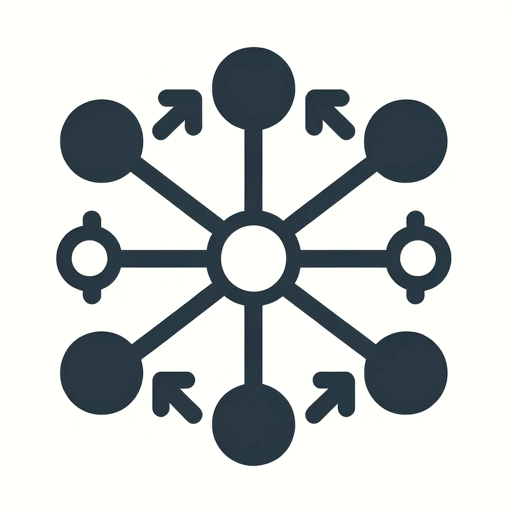UX Insight and Psychology Guide-UX and psychology insights tool.
AI-powered insights for better UX.
What data supports the use of specific colors in UX design?
Can you provide statistics on the impact of load times on user engagement?
What research backs the best practices in form design?
How do data visualization techniques enhance user understanding?
Related Tools
Load More
Cognitive Psychology Guide
Cognitive Psychology Expert, informative and approachable.

Expert en Psychologie
Conseiller en psychologie pour l'auto-assistance
UXpert
A UI/UX assistant for design principles, UX research, analyzing research data, and UI layout generation.

Mr Psych
Expert in psychology, adept at explaining concepts to diverse age groups.
InnerSight
I'm a reflective journaling partner. Through attentive listening, insightful questioning, and guided reflections, I'm here to support your self-discovery and personal growth.

UX Friend
UX Consultant for project guidance and user experience advice
20.0 / 5 (200 votes)
Introduction to UX Insight and Psychology Guide
UX Insight and Psychology Guide is designed to combine user experience (UX) research with psychological principles to offer actionable insights in designing user-centered products. It functions as a knowledge-based tool aimed at enhancing design strategies through empirical data, psychological frameworks, and best practices in UX. For example, in a scenario where a team is redesigning a website, this guide provides insights on how users perceive visual elements (based on theories like Gestalt psychology) and interact with interfaces, leading to improvements in usability. Another example is using cognitive load theory to optimize the user journey by reducing unnecessary steps in a purchase process.

Main Functions of UX Insight and Psychology Guide
Data-Driven UX Research
Example
The guide provides frameworks and research methodologies such as user interviews, A/B testing, and usability studies. For instance, during a usability test for an app, the guide helps in formulating questions that align with cognitive psychology to reveal deeper user motivations.
Scenario
In a real-world scenario, a product manager might use the guide to improve onboarding flows by identifying points where users get confused or drop off, using insights gathered from user feedback and cognitive patterns.
Application of Psychological Theories
Example
The guide applies key psychological theories such as cognitive load theory, Fitts' Law, and Hick's Law to real-world UX problems. For example, Fitts’ Law is used to design buttons that are easier to interact with, reducing time and effort for the user.
Scenario
A designer working on a mobile app can apply Hick’s Law to streamline decision-making in navigation, reducing the number of menu options presented at any given time to prevent user overload.
Design Evaluation and Usability Improvement
Example
The guide offers structured evaluations of user interfaces based on psychological principles like affordances, feedback loops, and error prevention. For instance, a usability audit of a shopping site could reveal that users are confused by non-intuitive navigation, which can be fixed by applying feedback and affordance principles from the guide.
Scenario
A UX researcher might use the guide to conduct heuristic evaluations and pinpoint usability issues on an e-commerce website, ultimately increasing user satisfaction and reducing cart abandonment.
Ideal Users of UX Insight and Psychology Guide
UX Designers and Researchers
UX professionals who focus on user-centered design will find the guide particularly useful as it provides both research methodologies and psychological theories for improving product interfaces. By integrating user psychology with design processes, they can create more intuitive and user-friendly products.
Product Managers and Developers
Product managers and developers benefit from this guide by applying UX research and psychological insights to ensure that the product's functionality meets user expectations. The guide helps them understand cognitive load, behavior patterns, and usability issues, allowing them to make data-driven decisions in product development.

How to Use UX Insight and Psychology Guide
Visit aichatonline.org for a free trial without login, also no need for ChatGPT Plus.
Access the platform easily without the need for any account or subscription, providing immediate use of the tool's features.
Familiarize yourself with the interface.
Explore the user-friendly interface to understand how to access various features and tools designed to enhance UX and psychology insights.
Input your query or research focus.
You can ask questions, seek advice, or explore topics related to UX and psychology. The tool will provide detailed, data-driven responses tailored to your needs.
Review and apply the insights.
Utilize the provided insights, backed by empirical data and best practices, to inform your UX design or psychological research.
Experiment with different scenarios.
Test different types of queries or scenarios to fully leverage the tool's versatility in various UX and psychology contexts.
Try other advanced and practical GPTs
烹饪大师
AI-powered tool for authentic Chinese recipes

DataLearnerAI-GPT
AI-Powered Insights at Your Fingertips

Pepe the Frog
AI-powered meme generator

Inustructor | いぬすとらくたー
AI-powered Japanese tutor for learners.

Stable Diffusion Prompt Assistant
AI-powered prompts for creative brilliance

Reverse Engineer Icons - ThePromptfather
AI-powered icon reverse engineering tool.

Grade My Essay
AI-Powered Essay Feedback and Grading

Error Solver Pro
AI-Powered Error Resolution and Learning

ブログライターアシスタント(ガイド付き)
AI-powered assistant for effortless blogging.

POWERBI_AI
Empowering your data journey with AI.

FlowGPT
AI-Powered Graph Flow Analysis

Fursona Stylist
Unleash Your Imagination with AI-Powered Fursona Creation

- User Research
- Behavior Analysis
- Design Strategy
- Cognitive Insights
- Empirical Data
Common Questions About UX Insight and Psychology Guide
What kind of data backs the insights provided?
The insights are supported by empirical studies, real-world data, and best practices from reputable sources in UX and psychology fields.
Can I use this tool for academic research?
Yes, the tool is ideal for academic purposes, offering in-depth, data-driven content that can support your research or study.
What areas of UX and psychology does the tool cover?
The tool covers a wide range of topics including user behavior, design principles, cognitive psychology, and user experience strategies.
How does the tool help in practical UX design?
It provides actionable insights and guidelines that can be directly applied to design processes, ensuring your designs are user-centered and effective.
Is the tool suitable for beginners in UX or psychology?
Absolutely. The tool is designed to be accessible for both beginners and advanced users, offering tailored guidance regardless of your experience level.